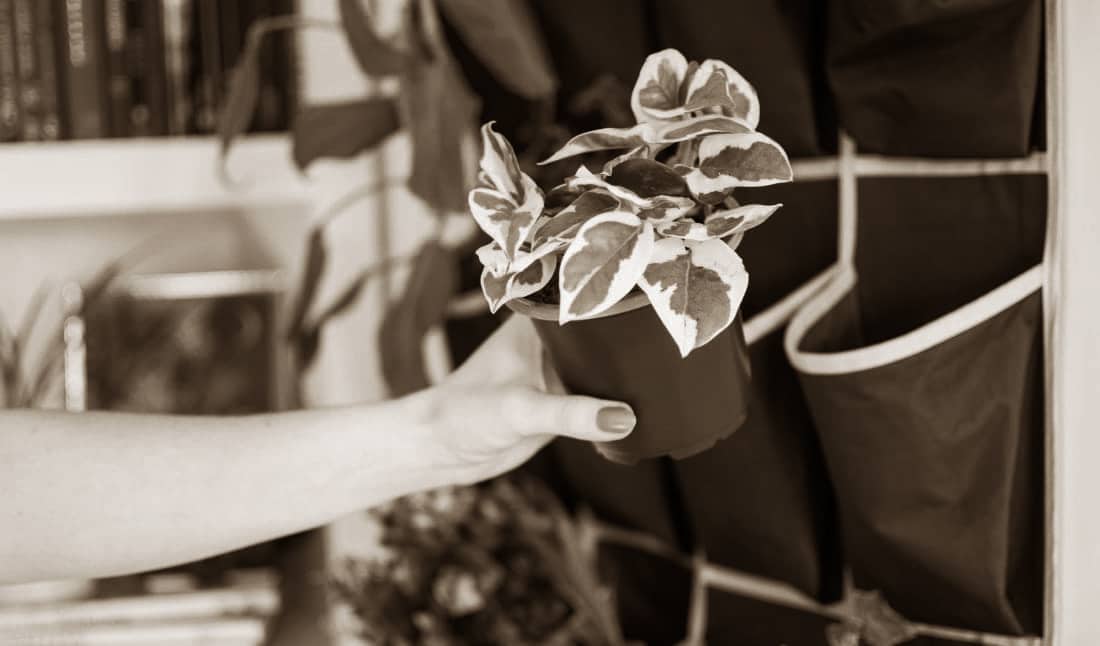
Make A Plant Wall Yourself
Project overview:
WORKING TIME: 30 mins – 1 hr
TOTAL TIME: 30 mins – 1 hr
YIELD: 1 Plant Wall
SKILL LEVEL: Beginner
ESTIMATED COST: Rs 2000- Rs 3000
Previously used primarily by interior designers and decorators, indoor living plant walls are gaining popularity among homeowners and are relatively simple to construct. Such eco-friendly home designs enable you to display your favorite plants in a unique and eye-catching manner, as well as free up valuable floor space by moving plants onto your wall.
Plant walls, also known as living walls or vertical gardens, can be made in a variety of ways and styles, and you can even purchase living plant wall kits to help you get started – though these can be expensive depending on where you buy them. This landscaping architecture tutorial will walk you through making a simple, low-cost DIY plant wall out of items you probably already have lying around your house.
What You’ll Need
Equipment / Tools
1 Scissors
1 Electric drill
1 Stapler
Materials
Fabric shoe organizer or fabric plant pockets
Plastic nursery pots
Potting soil
Wall hooks
Plants
INSTRUCTIONS
1. Choose Your Location
The first step in creating a DIY plant wall interior is deciding where you want to hang the plants. Choose a structurally sound wall that can support the weight of the plants, pots, and soil. You will also want a wall that receives natural light throughout the day (depending on the types of plants you want to include).
2. Line the fabric pockets with plastic
Fabric shoe organizers or fabric vertical wall garden grow bags will both work well for this DIY plant wall. To prevent water from leaking through the fabric and damaging the wall behind it, line each pocket with high-quality plastic to keep any excess moisture in. You can also staple a larger sheet of plastic to the back of the organizer for extra protection.
3. Choose the plants
Choosing the right plants for your plant wall will have a significant impact on natural architecture design and the living structure’s success. Choose plants that require similar amounts of light and water. This means that dry, sun-loving plants, such as succulents, should not be combined with humid-loving plants, such as ferns or orchids.
Also, choose plants that will thrive in the location you’ve chosen for your plant wall. If the wall they’ll be hanging on gets little to no direct light during the day, you’ll need to add some supplemental light, or they won’t survive.
Hanging plants like pothos, philodendron, and ivy look great on indoor plant walls and help to conceal the fabric planter.
4. Prepare the plants
Since this DIY plant wall does not have an irrigation system, it is convenient to be able to remove the plants to water them. This reduces the possibility of water damage to the wall behind the planter. Before adding plants to the plant wall, they should be planted in lightweight plastic nursery pots with drainage holes. Check that the pots are the correct size for each pocket. Water each potted plant thoroughly before affixing it to the wall, allowing excess water to drain from the bottom of the pots.
5. Prepare the plants
After you’ve potted and watered all of your plants, it’s time to put the finished plant wall together. Hang the fabric planter on the wall before filling it with plants to keep it secure and prevent spills. Attach sturdy hooks to the wall with an electric drill for support. Because the hanger can be heavy once filled with plants, make sure to secure it to wall studs. Once the planter is secure, arrange the plants on the wall one by one until you’re satisfied with the overall look!
Conclusion
Once your plant wall is complete, the main care requirements will be to ensure that the plants receive adequate water and light.
If you’ve chosen a variety of humidity-loving plants, such as pothos, ferns, and peperomia, misting the plant wall on a regular basis can also help it thrive. If you notice that your plants aren’t getting enough light, installing a grow light or adding a grow lightbulb to a nearby light fixture can help.
Some green architecture/plant enthusiasts may even choose to set up multiple plant walls and coordinate the plant collections in each to correspond with the amount of light received by the area of the room.
